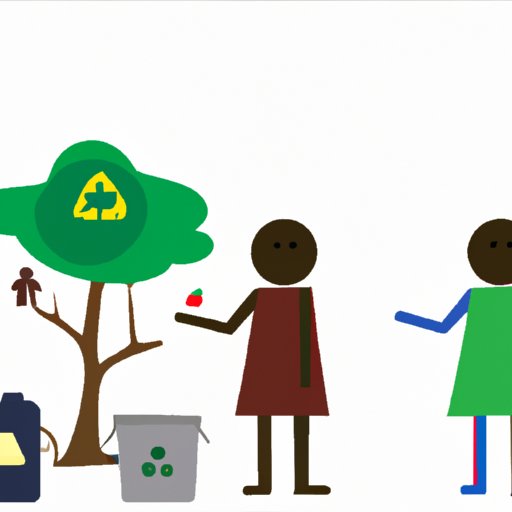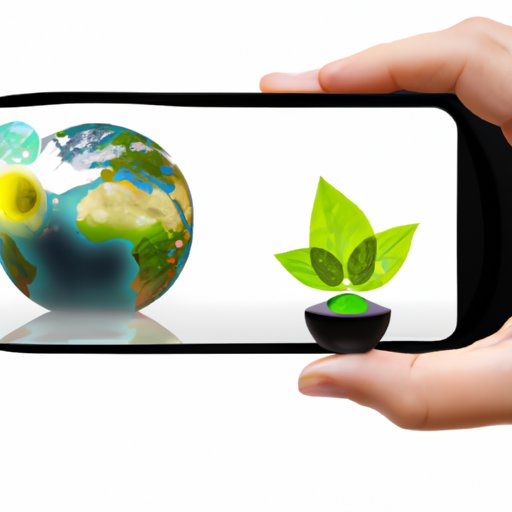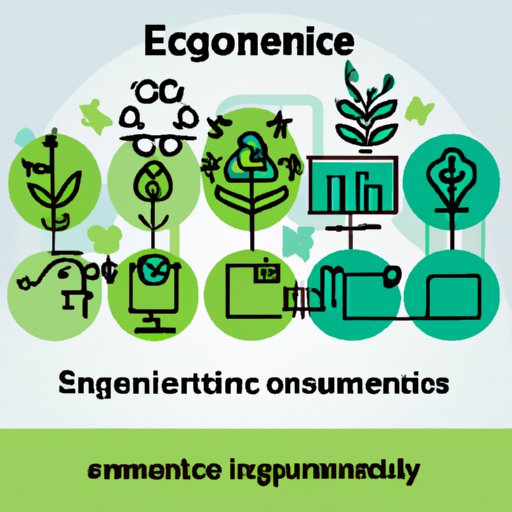Introduction
Environmental science is an interdisciplinary field of study that combines elements of biology, chemistry, physics, geology, and other sciences to understand the interactions between humans and their environment. It is a complex and ever-evolving field of study, but it is essential for developing sustainable solutions to global environmental issues. This article will explore the definition of environmental science, its scope and sub-areas of study, and the role it plays in understanding our relationship with the environment.
An Overview of Environmental Science: What It Is and What It Does
Environmental science is a broad field of study that focuses on the relationship between humans and the environment. It encompasses a variety of topics including ecology, conservation, pollution, climate change, and technology. According to the National Academy of Sciences, “Environmental science is the study of the environment and its components, processes, and interactions, as well as the application of this knowledge to the management of environmental resources” (NAS, 2020). The goal of environmental science is to identify and address environmental problems and find sustainable solutions.
The scope of environmental science is vast and includes the study of air and water quality, climate change, natural resource management, land use, and more. It is an interdisciplinary field, meaning it incorporates elements from multiple fields such as biology, chemistry, physics, geology, and more. By combining these disciplines, environmental scientists are able to understand the complexities of environmental issues and develop solutions to them.
Environmental science also has several sub-areas of study, including environmental engineering, environmental health, and ecological economics. Environmental engineering focuses on the design and development of systems and technologies for improving the environment, while environmental health focuses on the effects of environmental pollutants on human health. Ecological economics is the study of the economic and social aspects of environmental issues.
Exploring the Intersection of Environmental Science, Ecology, and Conservation
Environmental science, ecology, and conservation are often discussed together because they share common goals and objectives. Ecology is the scientific study of the interactions between organisms and their environment, while conservation is the protection and preservation of natural resources. Environmental science is the study of the environment and its components, processes, and interactions, and it incorporates elements from both ecology and conservation.
At their core, all three disciplines seek to understand and protect the environment. They each have their own unique approach and focus, but they are interconnected and can be used in combination to better understand the environment and develop strategies for conserving it. For example, environmental scientists may use ecological and conservation data to analyze the impact of human activities on the environment and develop solutions to mitigate the effects.

Understanding the Relationship Between People and the Environment
Environmental science seeks to understand the relationship between people and the environment and how our actions can affect the natural world. Humans have had a profound impact on the environment, and it is important to understand the implications of our actions. Environmental science helps us to analyze the impacts of human activities on the environment and develop strategies for mitigating them.
Environmental scientists study the ways in which human activities can affect the environment, such as through pollution, deforestation, overfishing, and climate change. They also examine how society responds to environmental changes, such as through policy changes, technological innovations, and lifestyle modifications. By understanding the relationship between humans and the environment, environmental scientists can help inform decisions and policies that promote sustainability.

Investigating the Impact of Human Activity on the Natural World
Humans have had a significant impact on the environment, and environmental science seeks to understand the implications of this influence. Pollution is one of the most pervasive forms of human-caused environmental damage, and it has been linked to climate change. Environmental scientists study the ways in which pollution affects the environment and what steps can be taken to reduce its impact.
Industrialization has also had a major impact on the environment. It has led to increased emissions of greenhouse gases, deforestation, and destruction of natural habitats. Environmental scientists study the effects of industrialization on the environment and develop strategies for reducing its impacts.
Examining Climate Change Through the Lens of Environmental Science
Climate change is one of the most pressing environmental issues of our time, and environmental science is essential for understanding its causes and effects. Environmental scientists study the ways in which human activities contribute to climate change, such as through emissions of greenhouse gases and deforestation. They also examine the effects of climate change, such as extreme weather events, ocean acidification, and sea level rise.
Environmental scientists also seek to understand how climate change affects humans and the environment, and how we can adapt to the changing climate. They study the potential impacts of climate change on food production, water availability, and public health, and develop strategies for mitigating these effects.

Analyzing the Role of Technology in Protecting Our Planet
Technology has the potential to play an important role in protecting the environment. Environmental scientists study the opportunities for innovation in areas such as renewable energy, green building materials, and waste management. They also investigate the limitations of technology, such as the potential for unintended consequences or misuse.
Environmental scientists also examine the ethical implications of new technologies, such as biotechnology and nanotechnology. They seek to understand the potential risks posed by these technologies and develop strategies for regulating them. By studying the role of technology in protecting the environment, environmental scientists can help inform decisions about the development and use of new technologies.
Conclusion
Environmental science is a complex and ever-evolving field of study, but it is essential for understanding our relationship with the environment and developing solutions to global environmental issues. It encompasses a variety of topics including ecology, conservation, pollution, climate change, and technology. Environmental science seeks to understand the impacts of human activities on the environment and develop strategies for mitigating them. It also examines the role of technology in protecting the environment and investigates the ethical implications of new technologies. By studying the environment and its components, processes, and interactions, environmental scientists can help inform decisions and policies that promote sustainability.
(Note: Is this article not meeting your expectations? Do you have knowledge or insights to share? Unlock new opportunities and expand your reach by joining our authors team. Click Registration to join us and share your expertise with our readers.)
